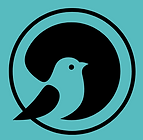A Solstice Like No Other: Everyday Magic, Day 1023
- Caryn Mirriam-Goldberg
- Dec 20, 2020
- 3 min read
Updated: Sep 25, 2023

I am thinking of two realities: that over 300,000 people in this country have died from COVID-19 and that we’re on the cusp of the winter solstice, when the shortening days stop in their tracks, and from here on (until June 21) begin lengthening. Of course these two realities are contained in one reality that tells us we’re always swimming in change, but at this moment, such change feels even more poignant.
The vaccine is on the hoof and a new administration committed to facing the reality of the virus and doing all possible to address it is soon to take office. At the same time, just yesterday, an old friend’s mother died from the virus, another dear friend’s husband is intubated in stable but uncertain condition, and people all around are hurting, grieving, and recovering (or not).
Strangely enough, as we move toward the solstice, the weather has been sunnier, warmer, and less burdened in this part of the country. That tunnel of charcoal darkness I often felt trapped in each December isn’t happening this year, and instead, there’s socially-distanced walks in 50-degree days with friends, cleaning out the old car in the sunshine, and opening the door to let the doors in and out without an arctic blast.
Yet, yet, yet. There’s no reconciliation when it comes to big-time loss for so many people, especially when this country could have and should have done so much better if only our national administration took action at the get-go, coordinated with state and local governments, and lived out a consistent and non-politicized message about mask-wearing and other safety measures. There’s no way around this when a country with 2% of the world’s population has consistently had about 25% of the world’s coronavirus cases.
What really lingers isn’t the sense of failure and wall of data but the individual and personal pain. My friend who lost her mother writes of being bereft and also how you can’t truly understand what 300,000-plus dead means until you have a beloved in the count. This stays with me.
It also leads me to a prayer and poem — the prayer for all of us to climb over the hill of darkness and see, in the light emerging, new ways to grow our wings of compassion for those suffering, listening for what we don’t yet know, and witnessing of our collective grief.
The poem is one I wrote years ago but means a little more to me now when the world is about — I hope, I wish — to flip over to catch more of the coming light.
Winter Solstice: 4:22 p.m.
The blunt air morning-stark,
a glass light that levels everything,
makes me forget my intention for this or that,
the insistent hands home to roost
even if my walk is sodden.
Trees gleam like bronze etchings
rising from the cacophony of
cell phone rings, car tires’ turnings.
The night must have its way
even against the snow geese slightly lost
until they find their rut in the wind.
The solstice is a bird with feathers so black
they mirror the buildings, then lift
to land back to this date in time as if time
never left its perch. The motion of breath,
or a wayward finger tapping on the wooden desk
aged by light. The inward turn of stillness,
a slight sway as if standing on a bus, holding
tight to the bar when the wheels mount a sharp corner
and something completely new appears.
Solstice and then the world at this point
flips over, begins arming itself
with light.














Comments